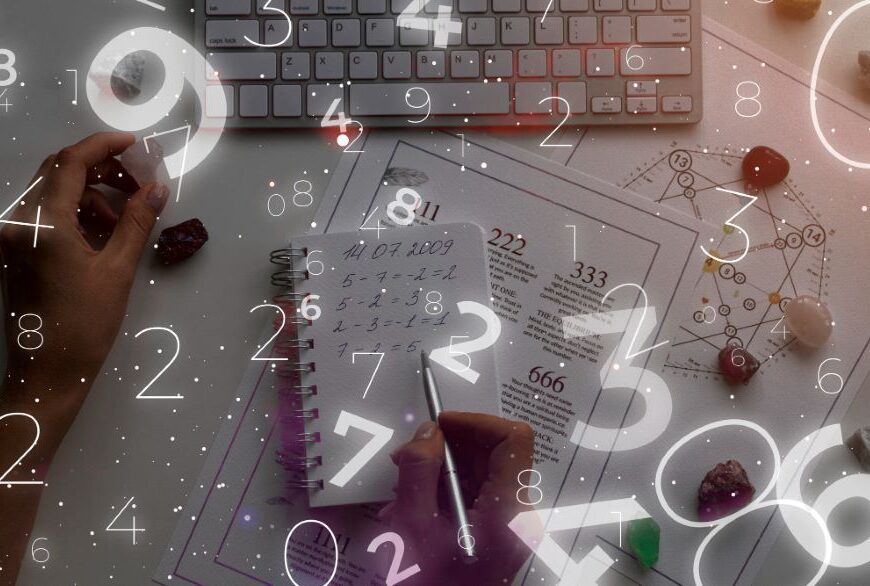
Arithmetic is the backbone of mathematics, and it plays a vital role in our daily lives. But what is arithmetic? It’s the branch of math that deals with numbers and basic arithmetic operations like addition, subtraction, multiplication, and division. These operations are not just for solving math problems in school; they are essential for everyday tasks. Whether you’re calculating change at the store, measuring ingredients for a recipe, or figuring out your monthly budget, arithmetic is at work. Understanding these operations enhances our problem-solving skills and analytical abilities, making life a bit easier and more organized.
Basic Arithmetic Operations
What is arithmetic?
When I think about foundation of all mathematics, I picture the foundation of all mathematics.It’s like the first step on a ladder that leads to more complex math concepts. However, what is arithmetic? At its core, it’s the study of numbers and the basic operations we use to manipulate them. These operations, for instance, include addition, subtraction, multiplication, and division. Consequently, they’re the building blocks of everything from simple calculations to advanced mathematical theories.
Historically, arithmetic developed slowly over time. Ancient civilizations, like the Sumerians of Mesopotamia, began using numbers in an abstract sense. They realized numbers could represent more than just physical objects. This realization paved the way for the Greeks in the third century BC, who made significant advances. They understood that a sequence of numbers could extend infinitely and developed theorems applicable to all numbers. Isn’t it fascinating how these early discoveries still impact our daily lives?
Arithmetic Operations Overview
Addition: Definition and Properties
Addition is the process of combining two or more numbers to get a total. When I add numbers, I’m essentially finding their sum. For example, if I have 3 apples and you give me 2 more, I now have 5 apples. The properties of addition include the commutative property, which means the order doesn’t matter (e.g., 3 + 2 is the same as 2 + 3), and the associative property, which allows us to group numbers differently without changing the result (e.g., (1 + 2) + 3 is the same as 1 + (2 + 3)).
Subtraction: Definition and Properties
Subtraction is the opposite of addition. It involves taking one number away from another. If I have 5 apples and eat 2, I’m left with 3. Subtraction has its own set of properties, such as the fact that it’s not commutative. This means the order matters (e.g., 5 – 2 is not the same as 2 – 5). Understanding subtraction helps me solve problems where I need to find the difference between quantities.
Multiplication: Definition and Properties
Multiplication is like repeated addition. If I want to find out how many apples I have in 3 baskets with 4 apples each, I multiply 3 by 4 to get 12. The properties of multiplication include the commutative property (e.g., 3 × 4 is the same as 4 × 3) and the associative property (e.g., (2 × 3) × 4 is the same as 2 × (3 × 4)). The Distributive Property is also crucial, allowing me to break down complex problems into simpler parts (e.g., 3 × (4 + 5) is the same as (3 × 4) + (3 × 5)).
Division: Definition and Properties
Division is the process of splitting a number into equal parts. If I have 12 apples and want to share them equally among 3 friends, each friend gets 4 apples. Division has properties like the fact that it’s not commutative (e.g., 12 ÷ 3 is not the same as 3 ÷ 12). Understanding division helps me solve problems where I need to distribute items evenly or find out how many times one number fits into another.
In our daily lives, these basic operations in arithmetic are everywhere. Whether we’re budgeting, shopping, or cooking, we’re constantly using these skills. By mastering these basic concepts, we can tackle more complex problems with confidence.
Applications of Arithmetic Operations

Arithmetic operations are not just confined to textbooks. They play a crucial role in our daily lives, making tasks easier and more efficient. Let’s dive into some real-life applications of these operations.
Applications of Arithmetic Operations in Finance
In finance, arithmetic operations are indispensable. They help me manage my money effectively.
Budgeting and Expense Tracking
When I budget, I use addition and subtraction to track my income and expenses. By adding up all my earnings and subtracting my expenses, I can see how much I have left to save or spend. This simple arithmetic keeps my finances in check and helps me avoid overspending.
Calculating Interest
Calculating interest involves multiplication and division operations. Whether it’s for a savings account or a loan, understanding how interest works can save or cost me money. By multiplying the principal amount by the interest rate, I can determine how much interest I’ll earn or owe. This knowledge empowers me to make informed financial decisions.
Applications in Shopping
Shopping becomes a breeze when I apply arithmetic operations. They help me make smart purchasing decisions.
Comparing Prices
When comparing prices, I use subtraction to find the difference between two products. If one item costs $10 and another $8, I subtract to see that the second item is $2 cheaper. This simple calculation ensures I get the best deal.
Calculating Discounts
Discounts require multiplication and subtraction. If an item is 20% off, I multiply the original price by 0.20 to find the discount amount. Then, I subtract that from the original price to see the final cost. This arithmetic helps me save money during sales.
Applications in Technology
In technology, arithmetic operations are the backbone of many processes.
Data Analysis
Data analysis involves addition, subtraction, multiplication, and division. When analyzing data, I often add or subtract values to find trends. Multiplication and division help me calculate averages or percentages. These operations turn raw data into meaningful insights.
Algorithm Efficiency
Algorithms rely on arithmetic operations to function efficiently. Therefore, by optimizing these operations, I can improve the speed and performance of software. Moreover, understanding how addition, subtraction, multiplication, and division work in algorithms is key to developing effective solutions. Ultimately, this knowledge enables the creation of faster and more reliable software.
Basic Arithmetic Operations Solved Problems
Solving arithmetic problems can feel like a puzzle. I find it rewarding when the pieces fit together perfectly. Let’s explore some Arithmetic Solved Problems that can help sharpen our skills and make everyday tasks easier.
Basic Exercises
Practicing arithmetic is like exercising a muscle. The more I practice, the stronger my skills become. Here are some basic exercises that I find helpful:
-
Addition and Subtraction: Start with simple problems like 23 + 17 or 45 – 19. These exercises help me get comfortable with numbers and improve my speed.
-
Multiplication and Division: Try multiplying numbers like 6 × 8 or dividing 56 ÷ 7. These problems reinforce my understanding of how numbers interact.
-
Fractions and Decimals: Work with fractions like 1/2 + 3/4 or decimals such as 0.75 – 0.25. These exercises enhance my ability to handle more complex calculations.
By regularly practicing these problems, I build a solid foundation in arithmetic. This foundation supports me in tackling more challenging scenarios.
Real-Life Scenario Problems
Arithmetic isn’t just for the classroom. I use it in real-life situations every day. Here are some scenarios where arithmetic is helpful:
Cooking and Baking: When I cook, I measure ingredients and adjust recipes. If a recipe serves four, but I need to serve six, I use multiplication to adjust the quantities. Understanding fractions and ratios helps me get the right balance of flavors.
-
Shopping and Budgeting: At the store, I compare prices and calculate discounts. If an item costs $50 and has a 20% discount, I multiply to find the savings. Subtracting the discount from the original price shows me the final cost. This arithmetic ensures I stay within my budget.
Tipping at Restaurants: After a meal, I calculate the tip. If the bill is $40 and I want to leave a 15% tip, I multiply to find the tip amount. Adding this to the bill gives me the total cost. This simple calculation makes dining out stress-free.
-
Measuring Spaces: When I measure a room for new furniture, I calculate the area. Multiplying the length by the width gives me the square footage. This arithmetic helps me choose the right pieces for my space.
These real-life problems show how arithmetic is woven into the fabric of daily life. By mastering these skills, I navigate everyday challenges with ease and confidence.
Arithmetic vs. Mathematics
When I think about Arithmetic vs. Mathematics, I see them as two sides of the same coin. Arithmetic is a branch of mathematics that focuses on the basic operations of numbers. It includes addition, subtraction, multiplication, and division. These operations form the foundation for more advanced mathematical concepts. Mathematics, on the other hand, encompasses a broader range of topics, including algebra, geometry, calculus, and more. While arithmetic deals with the manipulation of numbers, mathematics explores patterns, structures, and relationships in a more abstract way.
Difference between Arithmetic and Mathematics
The difference between arithmetic and mathematics lies in their scope and complexity. Arithmetic is like the first chapter in a math book. It’s where we learn to count, add, subtract, multiply, and divide. These basic operations are essential for solving everyday problems. For example, when I calculate my grocery bill or measure ingredients for a recipe, I rely on arithmetic. It’s practical and straightforward, making it accessible to everyone, even young students in grade school.
Mathematics, however, goes beyond these basic operations. It delves into more complex topics like algebra, where we solve equations and work with variables. Geometry involves shapes, angles, and theorems. Calculus explores change and motion. These areas require a more profound understanding of concepts and often involve abstract thinking. While arithmetic is concrete and tangible, mathematics challenges us to think critically and solve complex problems.
Importance in mathematics
Despite their differences, arithmetic plays a crucial role in mathematics. It serves as the building block for more advanced topics. Without a solid grasp of arithmetic, tackling algebraic equations or understanding geometric principles would be challenging. Arithmetic Operations are the backbone of mathematics. They provide the tools we need to explore more complex ideas.
In my experience, mastering arithmetic boosts my confidence in tackling other areas of mathematics. When I understand how to manipulate numbers through addition, subtraction, multiplication, and division, I can approach algebraic expressions with ease. I can also apply these skills to real-world scenarios, like calculating interest rates or analyzing data trends.
Arithmetic also introduces us to important concepts like the Number Line and fractions. These ideas are fundamental in understanding more advanced topics. For instance, the Number Line helps me visualize integers and fractions, making it easier to solve equations. Fractions teach me about ratios and proportions, which are essential in geometry and statistics.
Frequently Asked Questions
What is the Order of Operations in arithmetic?
When I first learned about the Order of Operations, it felt like unlocking a secret code to solve math problems correctly. The Order of Operations is a set of rules that tells me which calculations to perform first in a mathematical expression. This ensures that everyone gets the same answer. The acronym PEMDAS helps me remember the Order: Parentheses, Exponents, Multiplication, and Division (from left to right), Addition and Subtraction (from left to right). For example, in the expression 3 + 6 × (5 + 4) ÷ 3 – 7, I first solve the operation inside the parentheses, then proceed with multiplication and division, and finally, addition and subtraction. Understanding this Order prevents mistakes and confusion in solving complex problems.
How can I improve my arithmetic skills?
Improving my arithmetic skills feels like a journey, and I’ve found several ways to make it enjoyable. Practice is key. I try to solve different types of problems regularly. This helps me get comfortable with numbers and operations. I also use flashcards for quick mental math exercises. Another method is to apply arithmetic in real-life situations, like calculating tips at restaurants or budgeting my weekly expenses. These activities make learning practical and fun. I also recommend using educational apps and online resources. They offer interactive exercises and games that make Practice engaging. Remember, consistency is crucial. The more I Practice, the more confident I become in my arithmetic abilities.
Are there tools to help with arithmetic calculations?
Absolutely! There are plenty of tools available to assist me with arithmetic calculations. Calculators are the most common tool. They range from basic models for simple operations to scientific calculators for more complex calculations. I also find online calculators and apps incredibly useful. They offer features like step-by-step solutions and explanations. For those who prefer a more interactive approach, educational websites provide tutorials and quizzes to enhance my understanding. Additionally, spreadsheet software like Microsoft Excel or Google Sheets can perform arithmetic operations on large data sets efficiently. These tools not only save time but also help me verify my answers and understand the process better.
Arithmetic operations are the cornerstone of our daily lives. They help me manage finances, cook meals, and even analyze data. By practicing these skills, I enhance my problem-solving abilities and make informed decisions. I encourage you to apply these operations in real-life scenarios. This practice will boost your confidence and proficiency.
To stay updated with the latest developments in STEM research, visit ENTECH Online. This is our digital magazine for science, technology, engineering, and mathematics. Furthermore, at ENTECH Online, you’ll find a wealth of information.
In addition, we offer insights and resources to fuel your curiosity. Ultimately, our goal is to inspire your passion for new scientific discoveries. Moreover, ENTECH Online provides everything a teen wants to know for career planning.
Everything a teen wants to know for career planning.












